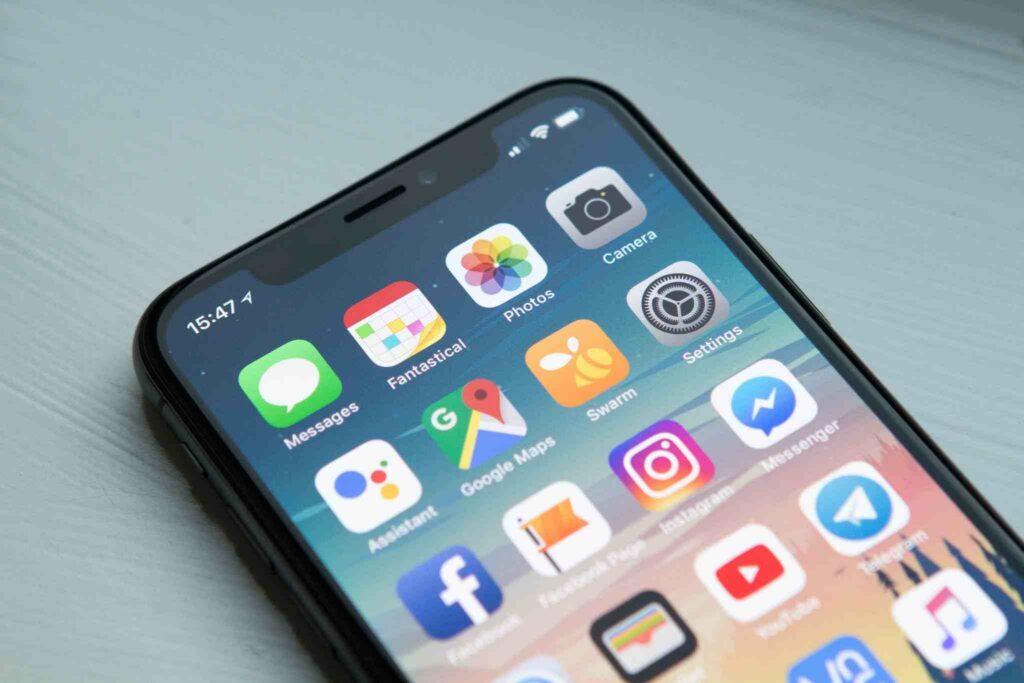
For the telecommunications as well as geospatial sectors to make well-informed choices, optimize network design, ensure public safety, improve urban infrastructure, and improve user experience, accurate and current coverage information is essential.
Service area maps, network coverage maps, the availability and intensity of network indications, internet connection, and other geographic data in certain places may all be learned from coverage maps. These maps are an invaluable resource for businesses, developers, and users alike.
Comprehending Coverage Maps
A Coverage Map: What Is It?
Coverage maps are visual aids that show the geographical range of network coverage over a certain region, including internet access, cellular network signals, and other services. The information is gathered from several sources, such as satellites, network providers, and data gathered by the public. Coverage maps are primarily used to give users important details about the strength and availability of a specific service in various places.
How are Service Maps Used?
In the telecommunications sector, coverage maps are commonly used to display locations with possible service gaps, signal strength, and the breadth of cellular coverage. They are also useful in sectors where connectivity or service availability is essential to day-to-day operations, such as transportation, utilities, and internet service providers (ISPs).
What Kinds of Coverage Maps Are There?
Maps of Cellular Coverage
The coverage regions of mobile network carriers are shown on these maps. They assist users in locating regions with stronger signal strength and display the coverage area of cellular signals, encompassing 2G, 3G, 4G, and 5G.
Maps of Internet Coverage
These maps show which areas are accessible for connectivity to the internet, such as fiber-optic or broadband services. When choosing the finest internet service, residential and business users can consult internet coverage maps.
Maps of Wi-Fi Hotspots
These maps show where Wi-Fi hotspots are located, which is helpful for those who travel or work remotely.
Maps of Spatial Data Coverage
Coverage maps may also show the availability of additional geographical information, such as weather information, satellite images, or environmental data, which is important for a variety of use cases and businesses, such as urban planning, agriculture, and disaster management. This goes beyond connectivity.
What Advantages Do Coverage Maps Offer?
Coverage maps serve a key role in several aspects, aiding developers, enterprises, and end-users alike.
Improved for Making Decisions
Coverage maps offer essential data that facilitates informed decision-making for both people and businesses. Cellular coverage maps, for instance, may be used by a business preparing to open a new retail location to locate locations with good signals, ensuring that consumers can have a smooth mobile in-store experience.
In a similar vein, internet service providers may use dekningskart på mobilabonnement to pinpoint areas with poor connection and deliberately schedule the growth of their infrastructure.
Planning Services and Growing Them
Coverage maps are a helpful tool for network providers to plan and expand their services. By using these maps, service providers may evaluate the current coverage areas, spot any gaps, and rank the locations that need the most network infrastructure development.
Providers may improve customer satisfaction and network resource optimization by knowing where consumers encounter poor signals or no service at all.
Gain User Experience Improvement
From the standpoint of the user, coverage maps enable people to choose their service subscriptions wisely. Users may steer clear of potential connectivity problems and guarantee a seamless experience—at home, at work, or while on the go—by consulting coverage maps prior to choosing a cell carrier or internet access provider.
Recognizing Signal Vulnerabilities
Coverage maps are a valuable tool for locating dead spots or poor signal locations. With the use of this data, developers may improve their apps by providing offline features in situations when an adequate signal isn’t accessible. These maps can also enhance location-based services and navigation, guaranteeing that users receive timely and accurate information even in places with poor connection.
Create Trustworthy Coverage Diagrams
Useful and practical coverage maps may be difficult since precise and trustworthy data from several sources is required. Keeping up with the rapid evolution of network infrastructure, particularly the effects of 5G networks, necessitates frequent upgrades, and balancing efficiency and detail while taking interference and environmental elements into consideration makes the process more difficult.
Maps of mobile coverage often serve as marketing tools
Mobile coverage maps are not created as tools for operations. They serve as promotional tools. Their main purpose is to convince clients—both present and future—of the provider’s network’s excellence. They will, by nature, make the greatest possible impression of their own network.
These maps also tend to be optimistic when in dispute, but not always. Most times, the maps are quite close to the actual coverage that is in place once the map is studied.
Maps of mobile coverage are made in a top-down
The physical laws, which are well known to control the propagation of mobile signals. The frequency, strength, and medium (air as opposed to leaves as well as a brick wall) through which waves travel will all affect how far an audio signal will travel.
The rules of physics are combined with geographic data on the locations and characteristics of different entities (houses, trees, buildings, etc.) to create mobile coverage maps, which are complex physics models.
Number granularity is lacking in mobile coverage maps
The strength of a mobile signal is measured in “decibel milliwatts” (dBm). Usually, this number falls around -80 (very good) through -120 (unusable). Furthermore, even if this signal intensity may be mathematically predicted, it requires a lot of processing power, particularly.
if someone wishes to chart the whole nation.
Therefore, mobile coverage maps usually restrict themselves to a qualitative judgment (“good outdoor coverage” or “good indoor coverage”) rather than offering precise figures. Although this makes sense in a marketing setting, it is not very helpful in terms of operations.
Mobile coverage maps sometimes are not visually detailed enough
When it comes to display, mobile coverage maps maximize for a small-scale view (country or area) by superimposing photos on a map. Nevertheless, the unaltered resolution renders the region as a blurry blob of color when an individual zooms in on a particular spot, such a home or street, making it impossible to extract any useful information.
Independent suppliers sometimes aren’t really independent
In this regard, we are aware that mobile providers serve as both juries and judges to display their maps of cell coverage. Additionally, they will inevitably paint the best possible picture. What about outside suppliers? In addition to commercial suppliers, there are the municipal authorities. Would they not be able to offer a more objective and accurate viewpoint?
First, let us discuss the commercial suppliers. There are several notionally independent sources of data on cell phone coverage. These will build precise maps of mobile coverage (https://norway.nordicvisitor.com/travel-guide/information/telephones/) by combining information from both top-down and bottom-up sources (via crowdsourcing and drive testing).
Nonetheless, cell phone carriers are the primary users of their products. They become reliant on the large operations as a result. These suppliers will show little interest in providing material that disparages their clients in giving consumers who aren’t looking to pay a lot of money fragmented info.
Lastly, how do the regulators fit in? In order to balance the interests of providers and customers, regulators must tread carefully. The mobile carriers will hold them accountable for maintaining their reputation as an impartial and just judge.
This implies that the authorities take great care to ensure that no material that may be interpreted as derogatory or unfavorable for any operator is published without at least double-checking. By using conventional methods, it would be very expensive and time-consuming to create an accurate, thorough, and defendable coverage map.
Additionally, these groups have limited resources at their disposal. Thus, individuals often choose the next best thing: get the operators’ self-reported coverage statistics and republish it, therefore sustaining the problems we previously outlined.
Whether it be data from “normal” cellular coverage or from LPWAN technologies like NB-IOT and LTE-M. For this reason, they developed the “un-coverage map,” a mobile strength signal tester. They give our clients precise, numerical data on signal strength for certain areas.
They achieve this by fusing sophisticated machine learning and geospatial analytics methods with data obtained from the public. In contrast to the conventional mobile coverage map, this bottom-up strategy gives their clients the useful data they require to maximize their connectivity-dependent activities. Therefore, please get in contact if you need precise, detailed, and location-specific signal strength data.
Contents


